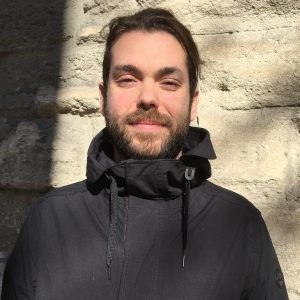Bionote

Federico Magistri is the Principal Perception Engineer at L&A, a Californian agriculture technology firm, developing robust Computer Vision systems for laser weeding. He recently obtained his Ph.D. degree at the Photogrammetry and Robotics Lab of the University of Bonn with a thesis titled “Robotics in Horticulture: From Sensor Data to Autononous Harvesting”. He has worked at the University of Bonn since November 2019 within the Cluster of Excellence “PhenoRob” working on Computer Vision, Machine Learning and Robotics for sustainable crop production. He has been a visiting student at the Centre for Robotics of the Queensland University of Technology in fall 2023. He has received his M.Sc. in Artificial Intelligence and Robotics from “La Sapienza” University of Rome with a thesis on Swarm Robotics for Precision Agriculture in collaboration with the National Research Council of Italy and the Wageningen University and Research. During his master, he spent one semester at the University of Freiburg as an Erasmus student.
Presentation Abstract
The world population is increasing and will, by 2050, nearly double its demand for food, feed, fuel, and fiber. Besides environmental challenges, labor shortage also poses crucial challenges to the agricultural production system. Automation of manual tasks in crop production can potentially increase efficiency but also lead to a change in agricultural practices for more effective usage of available land. In this talk, we address the problem of robotic fruit harvesting in challenging real-world scenarios such as vertical farms, where robotic sensing and acting need to cope with a cluttered environment.
Robotic fruit harvesting is typically done by directly detecting a grasp point in the sensor reading, which can lie on the fruit itself or on its peduncle depending on crop harvesting requirements. However, grasp point detection is not always possible as the ideal grasp point may be hidden behind leaves or other fruits. Our approach exploits shape completion techniques allowing us to estimate the complete 3D shape of a target fruit together with its pose even under strong occlusions. In this way, we can estimate a grasp point even when the fruit is only partially visible. We evaluate our approach on a real robotic manipulator operating in a vertical farm growing different fruit species and employing different harvesting tools. Our experiments show that, on average, our proposed pipeline increases the success rate by 18.5 percentage points, in terms of end-effector positioning, compared to the most competitive baseline among the ones reported in this work, which does not rely on shape completion.
Co-authors: Yue Pan, Jake Bartels, Jens Behley, Cyrill Stachniss, Chris Lehnert